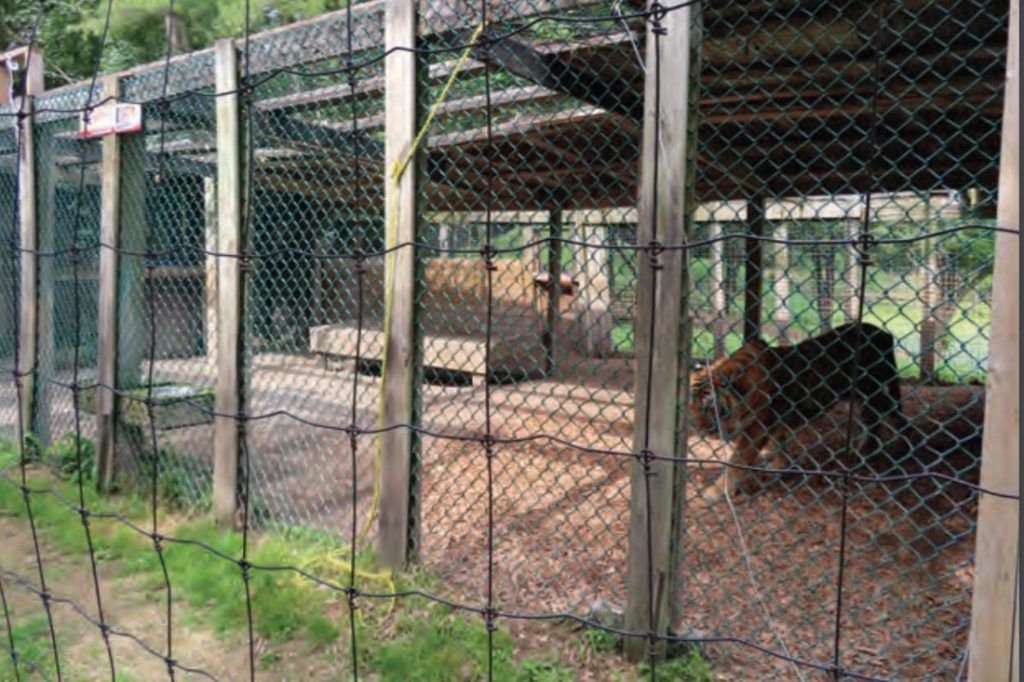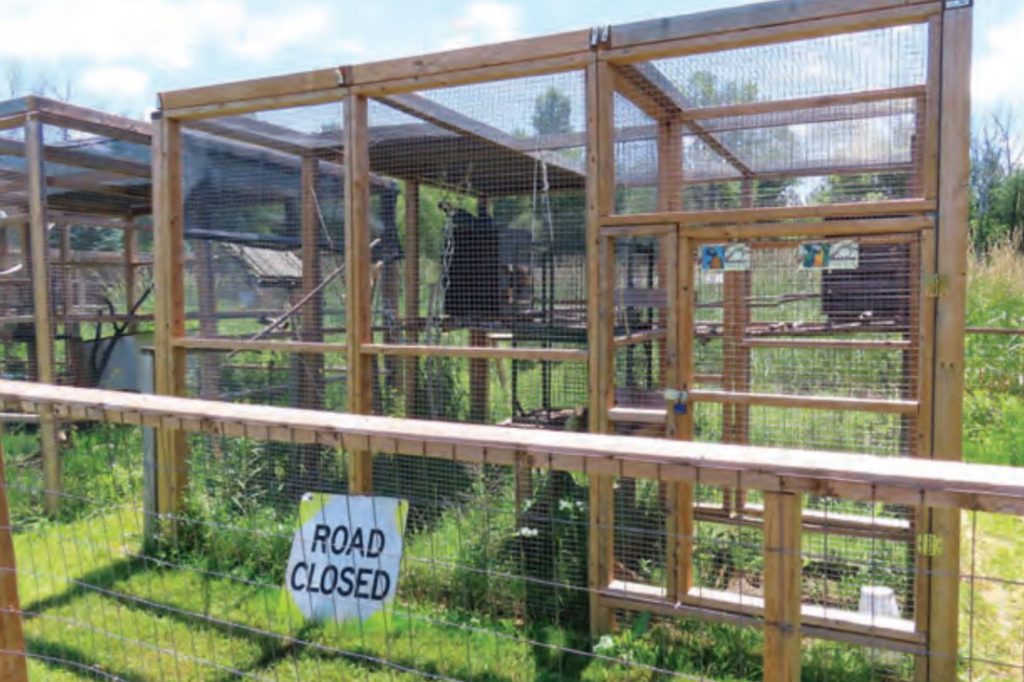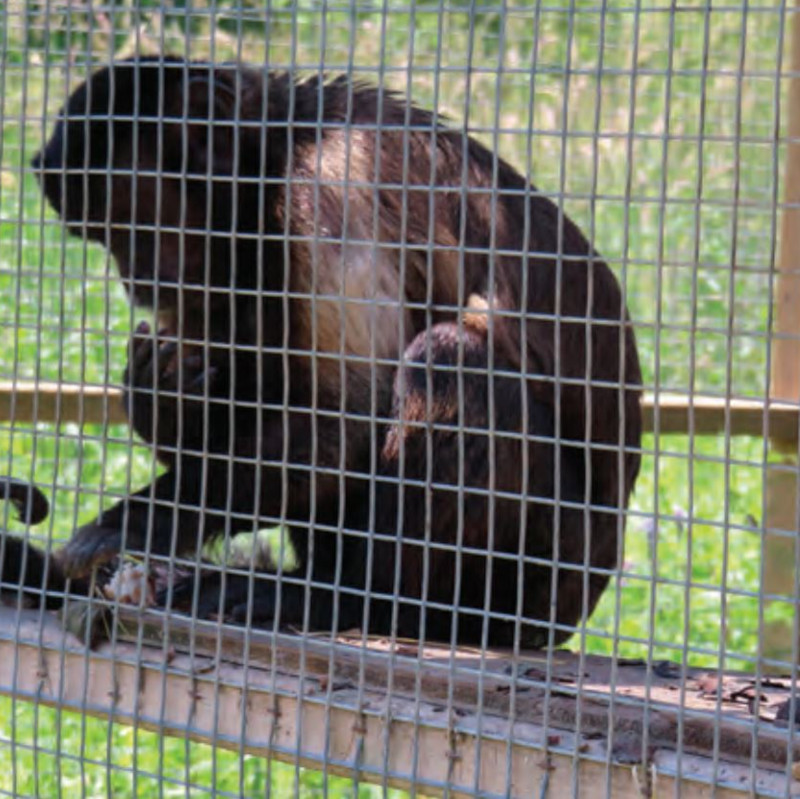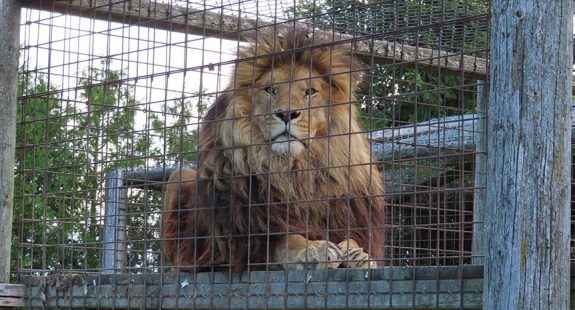Due to weak laws and inadequate enforcement, Ontario is the roadside zoo capital of Canada. In a comprehensive new report, World Animal Protection has highlighted just how bad things are for animals at these ramshackle facilities. Shockingly, Ontario doesn’t even bother to license or regulate zoos. And the World Animal Protection report raises dozens of concerning instances of potential non-compliance with the one law that does protect wild animals in captivity—the Standards of Care Regulations established under the Provincial Animal Welfare Services (PAWS) Act.
Cages Too Small for Animals to Behave Naturally
In the wild, tigers enjoy running, leaping, climbing and even swimming. At roadside zoos, they are often kept inside enclosures that provide inadequate space for natural behaviours.
This tiger was found at an Ontario zoo living alone. The tiger’s enclosure has essentially no available vertical space for the animal to jump or climb, and only rudimentary forms of enrichment. The enclosure also lacks adequate privacy areas that would allow the animal to remove themself from the view of humans or other predator species, which has been known to be stressful for many species.

A Lack of Shelter from the Elements
The Standards of Care Regulations require that wildlife kept in captivity must have adequate shelter. This is important to protect animals from the sun, wind, snow, and rain, but also because captivity inherently limits opportunities for wild animals to respond to stressors or perceived threats as they would in the wild. But most zoos in the report fail to comply with this provision.
Macaws congregate with others on riverbanks in dense rainforests and woodlands, but at one Ontario zoo visited by World Animal Protection, this pair of birds was kept in a shabby enclosure. Relief from the summer sun and 30°C temperature can only be found in a small corner of the cage, and the parrots have no opportunity to remove themselves from the view of the public or animals in adjacent enclosures.

Solitary Confinement Harms Physical & Mental Health
One of the most troubling practices identified in the report is when zoos house social animals in solitary confinement. Failing to meet the socialization needs of social animals can result in severe behavioral and psychological issues and lead to violence and self-injury. But the report found numerous zoos that housed primates, birds, and other well-known social species alone.
For example, capuchin monkeys live in family groups and rely on social interactions for their physical and psychological health. And Japanese macaques are also exceptionally social, living in troops of up to 160. But they are just two of the individuals that were found living alone during the investigation.


How to Help Animals at Ontario’s Zoos
World Animal Protection’s Nothing New at the Zoo report found that animal welfare and human safety issues were common at Ontario’s zoos. The organization has sent complaints to the provincial authorities.
The report highlights the need for strong legislation. Federally, Animal Justice is working to promote Bill S-241, known as the Jane Goodall Act. The Bill would represent a tremendous step forward for exotic and wild animals by limiting the ability of individuals and most zoos to import, keep, or breed over 800 species of wild animals in captivity, including big cats, bears, many monkeys, wolves, sea lions, walruses, and dangerous reptiles like crocodiles and snakes.
And Ontario residents can join Animal Justice in calling on Premier Doug Ford and their MPP to make it a priority to close roadside zoos, require zoo licenses, and impose strong standards to protect animals from suffering in zoos. Ultimately, it’s time for zoos as we know them to transition to an animal sanctuary model where animals aren’t bred for profit, and the needs of rescued animals are put first.
Banner: World Animal Protection




